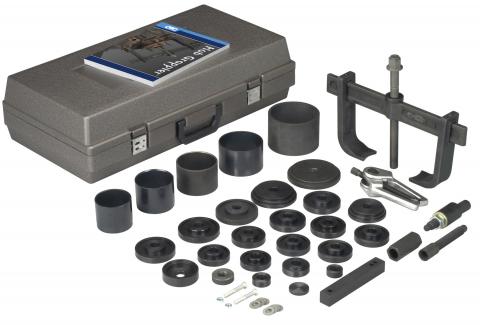A puller can speed up most jobs significantly and save you a ton of time during vehicle service. Because of the extreme force exerted, manually up to 20 tons, it’s important to use the puller safely to avoid vehicle damage or injury.
When you’re using an OTC puller, always follow the below steps and you’ll quickly be removing vehicle components and getting your customers back on their way.
With tons of force, we can’t stress safety enough when using pullers. Before using one of our pullers, we recommend reading the OTC safety puller information sheet, found here.
With OTC’s line, you can remove gears, bearings, wheels, pulleys, internal bearing cups, retainers, oil seals and transmission shafts or pinion shafts. If you’re wondering what puller works best for you, visit OTCTools.com, talk to your OTC Tools representative or contact us at 1-800-533-6127.
-Mount the puller tightly to the vehicle. If it’s a jaw-type puller, tighten the adjusting strap bolts and square the puller legs and jaws. Where possible, use a 3-jaw puller.
-Make sure you have the right size puller. If you’re applying maximum force and nothing is moving, use a larger capacity puller.
-Expect a gradual, controlled pull. Do not use an impact wrench on the forcing screw unless the puller is specifically designed for it.
-Only use legs designed for the puller for maximum force. Swapping legs from one puller to the other reduces its effectiveness and can potentially damage the tools. Also use the shortest legs possible when selecting a puller. This will help deliver the force where it’s needed.
-Install threaded puller legs evenly to avoid putting too much stress on one side of a component. If you’re pulling cockeyed, parts can be broken.
-If using sliding plates, they must be on the opposite side of the cross block from the forcing screw nut or hydraulic cylinder.
-Pulling attachments may not withstand the full force of your puller. Because of this, we recommend using the largest attachments that fit the component. This will help prevent vehicle damage and breakage of your puller.
As with any tool, proper maintenance and care can help them last a lifetime and more. Keep your pullers clean, lubricate the forcing screw and inspect your tool for dents, cracks or excessive wear.
What are you frequently pulling in the shop?





Comments